Porsche Folio "Articles & Guides"
How to Race your Porsche
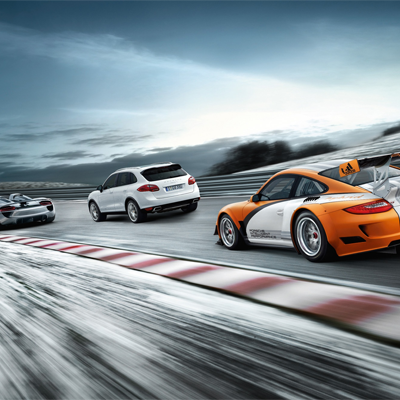
Porsches were designed and built to go fast. More than that, Porsches have a racing pedigree and so, not racing your Porsche could be considered a crime. Once you've taken ownership of a Porsche you are constantly reminded that it wants to be driven fast, so here are a few tips to help you race your Porsche.
Get on a Race Track.
It's tempting to go fast on the public roads, but it's illegal and dangerous. The world is littered with high quality purpose built race tracks, so find your nearest one. Racing is a lot more fun on track, and safer too!
Driver Training.
If you've not driven on a race track before it's well worth considering treating yourself and your Porsche to professional driver training. Contact your local track and find out when the next "Driver's Education" event will be held for the public. You might also consider contacting your local Porsche club and find out if they are organising track day sessions. It's nice to participate in track events with others who have similar cars. Track days will start with a driver's briefing session. Make sure you listen to the advice. They know what they are talking about.
Safety First.
On track your Porsche, and you, will be subjected many forces that just aren't present on normal driving conditions, so safety is a must. On the day of your first track event, check all of the key areas of your Porsche, oil tyre pressures, tyre tread, steering fluid, brake fluid and brakes. If you are not experienced in doing a safety check on your car, take it to a mechanic and ask for a pre trackday safety check. It doesn't end there though. In between your track sessions continue to check brakes, tyre pressures and generally around and under the car.
Learn the rules.
Every track has rules. Make sure you know them and abide by them on the day. The driver's briefing will go through them before you go on track. These rules will include permitted noise levels from your Porsche at certain RPM's, essential safety equipment like a crash helmet, overtaking on a particular side and what to do when a track marshal waves a coloured flag. On the issue of noise levels, a track official will measure the noise with a db meter on the day. Noise levels vary between tracks and will be dependent on local authorities, but might around the 100db level.
Softly Softly to start.
Don't be in a hurry to perform like Sterling Moss or Fangio. Take your time to get to grips with the track and how your Porsche feels. Once on the track, go around a few times at a normal rate of speed in order to get used to it without the stresses of high speeds. Most track days start off with a sighting lap, where a track driver will lead you round in procession to show the ideal driving lines, as well as to help you control your adrenaline.
Use the Track to your advantage.
Once you and your Porsche are out on track at speed, why not take advantage of other more experienced track drivers. Follow them around for a few laps to get the feel of circuit and the optimum driving line, turn in points and braking points are. Every turn should be approached being mindful of both entry & exit and and understanding of apexes. The optimal apex point is the point at the centre of the turn which will produce the fastest exit speed. For the ideal corner, you should try to maintain as shallow an arc as possible from your entry, or turn-in point, to the exit point. Aggressive turns bleed off speed. Smooth turns that maximise use of the track provide the fastest route through the turn. Screeching tyres sound great and a drifiting Porsche looks awesome. However they are not good for speed, nor is it a cheap way to drive. Tyres are expensive afterall!
Make Sure you Brake Properly.
Braking is not a simple matter of slamming on the brakes. Push too hard and you risk locking the wheels and going into a skid and losing control of your Porsche. Driving on the roads means you're probably used to braking slowly and gently bringing your Porsche down to the speed you're looking for. On a track however, braking should be done all at once and at the last possible moment. The whole point of braking on track is to slow your Porsche to the speed necessary to successfully negotiate a turn as well as settle the car at turn-in or when used in combination with steering and acceleration can cause the car to begin to rotate in order to carry more speed into a corner.
How to be Passed.
Nobody wants to be overtaken. Unfortunately on track it's inevitable. There's always someone faster than you. Each track will have it's own set of rules for 'passing'. Make sure you pay attention at the driver briefing so you know the correct procedure for your track. At many tracks overtaking is done on the left and always on the straights. If you know you're not going fast enough, indicate to let the approaching driver pass by using your turn signals. You may get a blue flag by one of the track marshals to indicate to you to let a faster driver pass you by.
Learn and be mindful of the flags.
While most tracks attach the same meaning to each flag, there is some local variation. Use this paragraph as a guide but be sure to check with the event organizer. The following will usually apply:
- A solid green flag means that the warm-up lap has ended and that passing may commence (when passing is allowed and then only according to rules of consent).
- A blue flag with a diagonal yellow stripe means that you need to allow the car behind you to pass. This is usually only shown when you have already failed to do the right thing without request. At the next passing zone, give the signal and hold your line.
- A stationary yellow means that there is some type of danger ahead. Slow down and use caution.
- A waving yellow means that there is a disabled car on the track. Slow down and prepare to go off your line to avoid the car.
- A flag with alternating yellow and red vertical stripes means that there is debris on the track (e.g., an oil slick). Slow down and watch for debris on the road.
- A black flag means that there is something wrong with your car. If the black flag is shown at all flag stations, it means that all cars are being called back to the pit, usually because there has been a crash or there is something else obstructing the track. Safely slow your vehicle, indicate to the flagger that you have seen the flag and pull into the pits for instruction from the trackmaster.
- A red flag means you must stop your car immediately. Brake slowly and be aware that another car may be behind you. Come to a stop, preferably off to the side. Stay still and stay in your car. There may be emergency vehicles entering the track. Wait for instruction.
- A black flag with a yellow meatball means that the run group is about to end. Proceed through the checkered flag and slow to a cool-down lap.
Relax and cool down.
The last lap of your session is often called the "cool-down" lap. This is because you're gently winding your Porsche down from the extreme stresses and temperatures of aggressive track driving. Its preferable to let the car come down slowly. You also have been driving your body hard both physically and mentally and it's a good practice to get your heart rate stress levels down as you cruise round on your last lap before heading to the pit lane. When you exit your Porsche after an aggressive session on track, you can feel the energy pumping through your body. It's a great feeling.
Use the Steering Wheel correctly.
As a general rule of thumb, you should position yourself and seat such that with your arms stretched straight and the back of your wrist on the wheel, your wrist should stay in the same contact position as you move it around the circumference of the wheel from the 9 am to the 3 pm positions. Adjust your seat to suit. When you are driving your Porsche, position your hands at opposite positions at 9am and 3pm. This will give you the best response time and best posture at high speeds.
Keep a window open.
Keep a window open. It will get hot when on track. Your engine is working hard and so will you be. Also, keep your stereo off. You want to hear the noises going on around you.
Driving fast takes time and a lot of practice.
You won't be quick the first time, nor the second or third. It takes a lot of practice. Take your time. Feel the car as well as get used to the track. Watch other drivers who are faster than you and watch the lines they take through the corners and the braking points and see if you can adopt a similar approach. Early on in your track career it's worth getting an instructor in your car with you. It's relatively cheap and the benefits are huge.
Track days are expensive.
It's not just the price of the track time that costs money. You'll be amazed at how fast you get through petrol, brake pads, brake discs and tyres. Because you're putting your Porsche through a lot more stress compared to road driving, there will be other major components that need replacing too. So be prepared to have deep pockets!
Get Involved in the dicussion
We think it's better to talk and would love to hear your thoughts on this article topic. Simply scroll down to read what other Channel P101tv members are saying about this article. Why not add your say. Your comments belong here! You can scroll to the end of the page or Click here to add your comments now.There's Plenty of Articles & Guides
Our Porsche Articles and Guides archives are constantly growing. Take a look through the archives from the Articles menu or click on a preview from the carousel below.
Feel Free to Join in!
If you would like to join in, we would welcome your ideas for an artcle. If there's subject that you'd like to write about then get in touch and let us know. If the topic fits the reader's corner then we'd be pleased to publish it. You will of course receive full credit for the article as well as a link back your Channel P101tv Profile.Have we missed something or feel something should be added?
If there's something missing that you feel needs to be included or if something doesn't seem quite right, then please let us know. If you'd like to write an article for inclusion here then please get in touch. Just click on "Contact us" at the bottom of the page.
We hope you enjoy the Reader's Corner of the Porsche Folio!



























































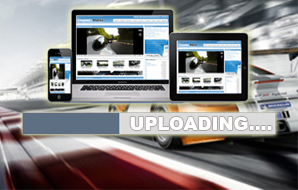

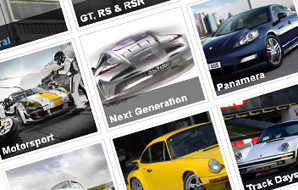

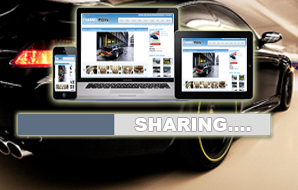
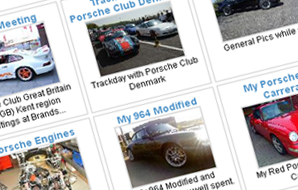
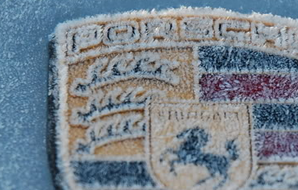
I've always wanted to take my Porsche on track but have never got around to doing it. Must be alot of fun. I must admit I'd be slightly worried about making a mistake and causing some expensive damage to my Porsche.